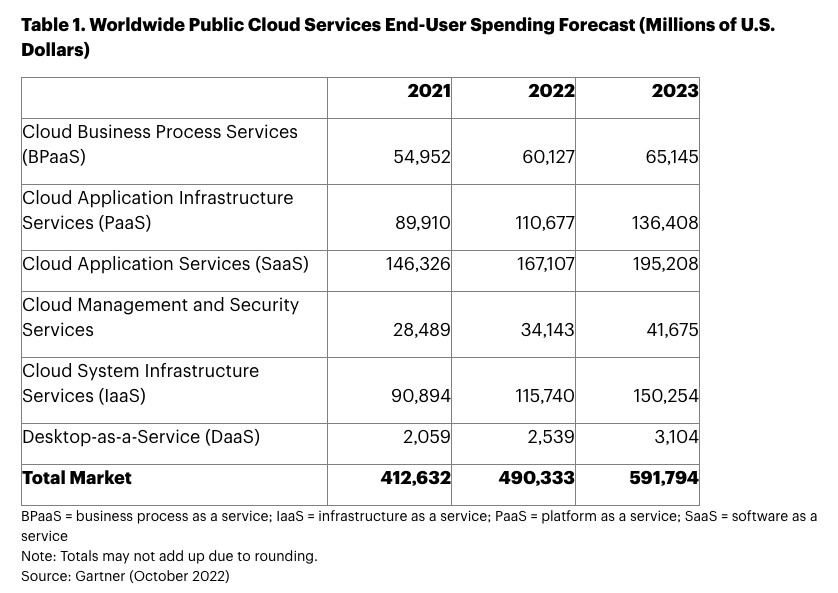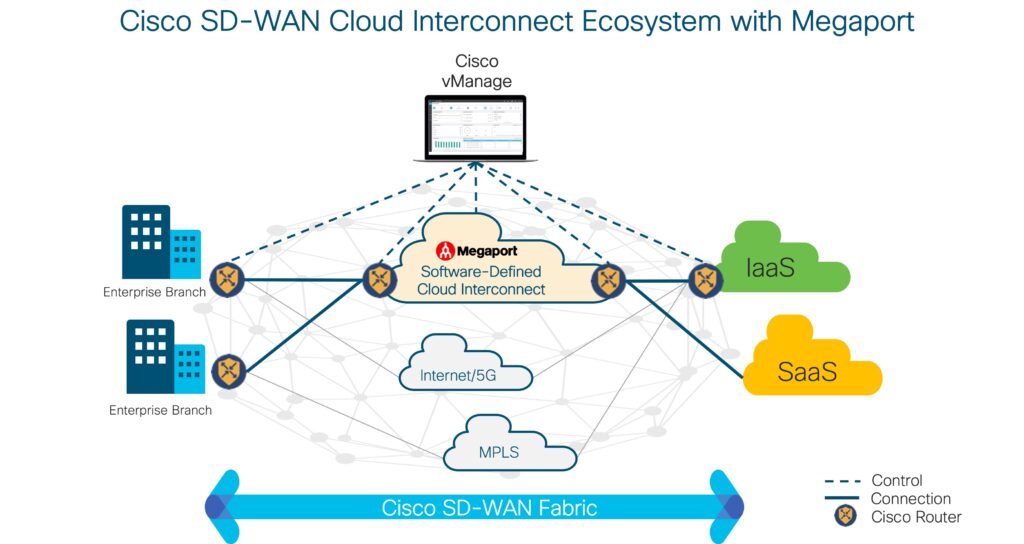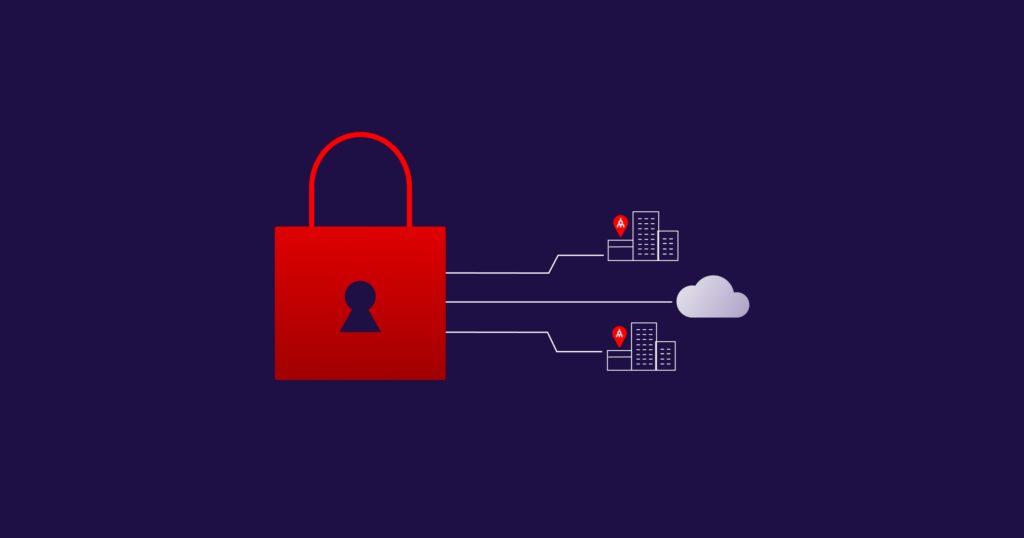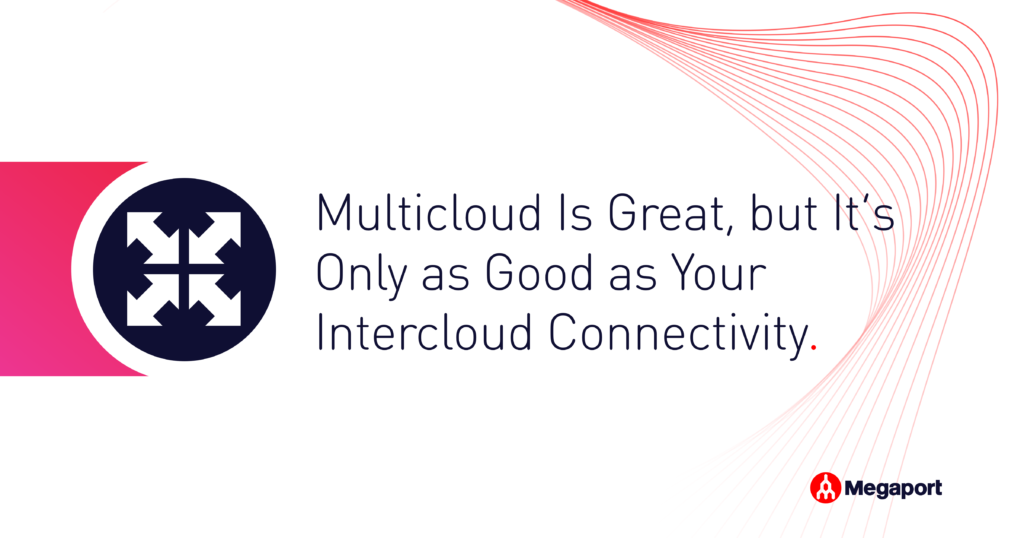
How NaaS and SDCI Can Lower Your Cloud Spend
- November 14, 2022
Cloud costs can pile up quickly, and often behind the scenes. We explain how software-defined cloud interconnect (SDCI) can help your business rein in a swelling budget.
We’re accustomed to acquiring more possessions than we need, as storage units proliferate, and spending beyond our budget can be common in a world with ample credit. This spendthrift mindset is not restricted to the realms of aspirational gym equipment purchases (not to mention pandemic-based panic buying of all that toilet tissue). Enterprises—including small- to medium-sized—have difficulty reigning in costs and understanding storage needs in the cloud computing landscape. And since each department may have its own cloud storage budget, waste can go unnoticed.
Gartner ®* estimates that by 2025, among application software, infrastructure software, business process services, and system infrastructure markets, the public cloud will capture 51% of IT spending, up from 41% in 2022. Egress fees can range from $0.05 to $0.20 per GB of data moved from the cloud to your computers – which can add up quickly behind the scenes. And hidden costs caused by lower efficiency, higher latency, and lower bandwidth—unfortunate aspects of using the public internet—can add up to huge drops in efficiency each year. With cloud spending increasing, the waste could easily match pace.
Enter software-defined cloud interconnect (SDCI) , a technology that is increasing in popularity and could lower your business’ cloud spend. In this blog, we share how software-defined technology and SDCI—along with Network as a Service (NaaS)—can reduce your enterprise multicloud spend, leaving you more budget to spend on the things that matter to you.
Understand the differences between leading cloud providers AWS, Azure, and GCP in our comparison.
Contents
- Lessening waste amidst cloud computing benefits
- Top culprits in cloud spend
- How NaaS can simplify cloud provisioning
- How SDCI supports cost savings
- Best practices to reduce cloud costs
- Megaport and cloud cost management
Lessening waste amidst cloud computing benefits
In a Flexera survey, more than 750 IT professionals estimated that about one-third of their company’s cloud computing investments are wasted. A top goal for 2022, according to respondents, was to improve cost saving initiatives in the cloud. The spending glut is occurring even though cloud-based service plans tout these economic cost savings:
- Utility-based pricing – this pricing model enables enterprises to pay as they use computing services, based on a flat rate;
- Clear cost models to choose among – cost models can be customized to enterprise specialties, for example, an app developer may need fast networking, while a gaming company may need high graphics capabilities. The cost models offer differing memory, CPU amounts, and so on. Pricing may vary depending on the volume of data transferred into and out of the cloud; and
- Fewer direct purchases of physical equipment and deferred data center costs – through monthly fees and contracts, the cloud customer pays indirectly toward cloud companies’ physical equipment and cloud storage, and reaps the know-how and breadth of their security features and updates.
Multicloud use provides these additional benefits:
- Increased performance and scalability;
- Ability to pick and choose features for ‘best in breed’ resource allocation across multiple cloud providers;
- Crucial data storage, with redundancy; and
- Avoidance of lock-in contracts with only one vendor.
Learn more benefits, as well as use cases and how to get started, in our complete multicloud guide.
Top culprits in cloud spend
Overprovisioning and “always-on” cloud computing are two of the main culprits of cloud waste . Also contributing to the problem is orphaned volumes and snapshots: Customers are estimated to spend 15% of bills on storage, but 35% of that spend is on data that has “lost its purpose”. Another common problem is when teams overestimate their cloud needs. This could be due to lax oversight on cloud opex within divisions, especially if engineers and developers are making decisions on costs instead of receiving guidance from financial teams. InfoWorld ’s David S. Linthicum believes most financial managers expect IT teams to overrun budgets, and there are rarely serious consequences when budgets are busted.
As part of the urgent move to cloud provisioning during the pandemic, companies may have ignored or downplayed cost concerns to survive. With cloud adoption, a rise in innovation across platforms and locations can spur company growth, but it can cause budgets to balloon if unchecked. Cloud waste can creep up throughout an organization if companies duplicate purchases for similar cloud services, and when there’s inconsistent cloud optimization or maintenance.
The below table (created by Gartner in 2022) outlines the worldwide spend on various public cloud services (in millions of U.S. Dollars), including infrastructure, security, and applications. It forecast a tremendous surge in spending across all services, which proved true especially as enterprises transitioned to the cloud to support a distributed workforce.

Source: Gartner, 31st October 2022, https://www.gartner.com/en/newsroom/press-releases/2022-10-31-gartner-forecasts-worldwide-public-cloud-end-user-spending-to-reach-nearly-600-billion-in-2023
How NaaS can simplify cloud provisioning
Traditionally, companies used dedicated data centers and hardware to connect to their clouds. But now, many have turned to Network as a Service (NaaS) , which has revolutionized how companies can connect to the cloud by eliminating or reducing the capex (capital expense) of dedicated servers to an opex mindset (operating expense), through opting for cloud and application services such as AWS , Google Cloud , and Microsoft Azure .
Moving network needs to a service cost rather than a hardware cost means choosing cloud contracts that cover hardware, software, licenses, updates, and security features: Which your provider manages all of, too (hence the ‘service’). The rise of mobile workforces and customers’ expectations of instant and reliable connectivity has increased organizations’ collective move to NaaS, with cloud service providers giving enterprises the resources they need to handle complex daily data needs from location to the edge.
NaaS on-demand services mean enterprises can:
- Monitor and manage their networking services from a single pane of glass;
- Track their ongoing usage and billing; and
- Order, deploy, and co-manage services on-demand, as well as hit pause and play on their connections as they need.
NaaS offerings range from SD-WAN access to virtualized customer premises equipment (vCPE).
From security to costs, learn more about SD-WAN with our comprehensive guide.
How SDCI supports cost savings
SDCI is a central hub between an enterprise and any number of cloud, network, and internet service providers (ISPs), and can optimize your enterprise’s cloud spend. Many organizations, whether in healthcare, government, manufacturing, or finance, depend on software as a service (SaaS), infrastructure as a service (IaaS), and platform as a service (PaaS) to manage daily and long-term activities. SDCI supports as-a-service platforms by providing secure and automated connectivity.
SDCI bypasses the public internet (as depicted in the example diagram below) and its challenges of latency, security, and bandwidth . Enterprises pay higher egress fees transferring data over the public internet than through a private connection. And as we’ve covered before (see our blog, Is Your Internet Connection Damaging Your Business? ), when financial and other highly valuable data is transmitted over public networks, “it needs to take more Autonomous System (AS) paths, leaving it exposed for longer – and with no end-to-end encryption or Firewall as a Service (FWaaS) capabilities baked in, you have to put the safety of your data down to chance.” Compromised data can have far reaching cost implications, especially to your reputation.
Most SDCI vendors offer direct-connect integrations with CSPs, allowing them to charge lower egress rates and therefore pass the savings on to customers.

Source: Cisco (2020) ‘Cisco Launches SD-WAN Cloud Interconnect Ecosystem with Megaport ’
Best practices to reduce cloud costs
There’s no substitute for strong financial oversight, audits, and budget accountability in departments and among mid-level engineers and designers. But using SDCI through managed service providers (MSPs) or non-managed service providers (non-MSPs) can be part of that vigilance. With virtualized connectivity, SDCI allows IT teams to:
- Manage cloud performance – using Megaport as part of your SDCI setup, for instance, allows businesses to increase and decrease bandwidth—between 10Mbps and 10Gbps—as needed.
- Scale cloud use – by choosing a cloud provider that enables you to scale your connection up and down depending on your business priorities and needs, you’ll only be paying for what you use.
- Integrate multicloud setups – for example, an enterprise could seamlessly use Microsoft’s desktop software applications across regional teams, use Google Cloud’s app development features, and dedicate other data to AWS storage.
- Improve SD-WAN connectivity – SDCI can level up your SD-WAN set-up. When engaged through Megaport Virtual Edge (MVE) , for example, it can connect branches to cloud through SD-WAN platforms, improving network reliability, reducing provisioning time to minutes, and optimizing connectivity costs.
- Streamline easier network management, flexibility, and elasticity – an enterprise can use just one physical SDCI port to access an array of services, namely private and public clouds, network and public internet providers, and SaaS.
As enterprises rely on the expertise, security features, and services of cloud providers and MSPs, they can’t afford to ignore internal vigilance. These fixes should then be considered:
- Insist on IT oversight on business units that may be meeting short-term goals through excessive cloud spend;
- Audit resource use versus needs and create a plan to manage it;
- Create enterprise-wide cloud governance and oversight;
- Evaluate cloud costs versus benefits; and
- Seek discounts and deals from vendors.
Megaport and cloud cost management
SDCI providers are either MSPs or non-MSPs, such as Megaport. MSPs use their own hosted data center or a third-party data center to provide network, infrastructure, security, or application services. Non-MSPs provide the same services, but via an elastic interconnection layer for more flexibility. Megaport’s Points of Presence (PoPs) are in hundreds of data centers spread across 24 countries, creating private and vendor-neutral connectivity through an easy-to-use point-and-click portal.
With a scalable enterprise , you can increase or decrease bandwidth and speed, and the reach across locations as well as switch up your types of connections. IT department oversight helps their businesses adapt to real-time traffic and data patterns to make sure they have efficient digital workflows without over-allocating resources, a key step in managing costs.
Since 2020, many enterprises have used SDCI to bridge software-defined wide area network (SD-WAN) sites and Points of Presences (PoPs) to clouds through Megaport (an SDCI provider) and our key partner, Cisco . SDCI assists edge computing, too, by deploying at edge locations without additional hardware.
Choosing SDCI as the access point can give enterprises more control in their cloud spend and provide insightful data connected to cloud waste – a key step in reducing it.
*Source: Gartner Press Release, Gartner Says More Than Half of Enterprise IT Spending in Key Market Segments Will Shift to the Cloud by 2025, February 9, 20222 (https://www.gartner.com/en/newsroom/press-releases/2022-02-09-gartner-says-more-than-half-of-enterprise-it-spending
)
**Source: Gartner Forecast: Public Cloud Services, Worldwide, 2018-2024, 4Q20 Update
Gartner, How to Optimize Network Connectivity Into Public Cloud Providers, Lisa Pierce, Danellie Young, Jonathan Forest, 5th August 2022.
GARTNER® is a registered trademark and service mark of Gartner, Inc. and/or its affiliates in the U.S. and internationally and is used herein with permission. All rights reserved.


